Google, sorry, but that Pixel event was a cringefest
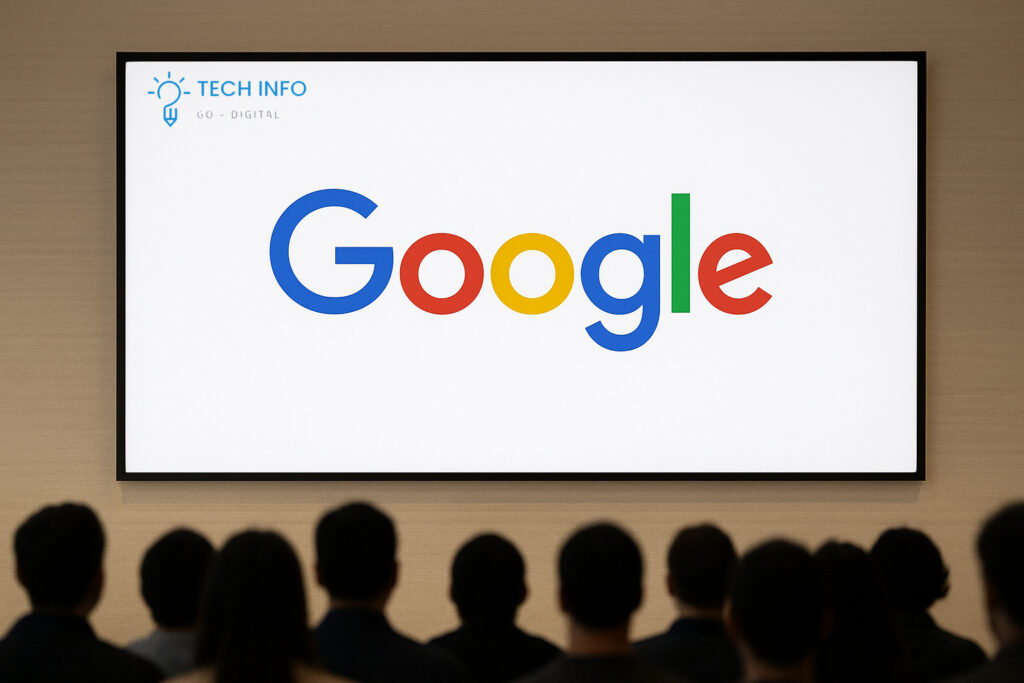
Google, Sorry — But That Pixel Event Was a Cringefest Tech launches are meant to excite, inspire, and showcase innovation. They’re supposed to leave audiences buzzing with anticipation. But every now and then, a company overdoes it — and instead of delivering a polished, memorable moment, it ends up creating something that feels… awkward. Unfortunately, that’s exactly what happened at the recent Pixel event. The Problem with Overhyping Rather than letting the products speak for themselves, the event was stuffed with dramatic pauses, over-the-top self-praise, and a script that tried too hard to be funny. Instead of sounding authentic, it often came across like a corporate comedy sketch gone wrong. When your audience is rolling their eyes instead of leaning forward, you’ve lost the room. The “Forced Cool” Syndrome One of the biggest missteps was the event’s attempt to feel trendy. The speakers leaned on awkward humor, exaggerated excitement, and unnecessary slang to appeal to younger crowds. Instead of being engaging, it felt forced — like a teacher trying to “sound hip” in front of students. Consumers want clarity and genuine confidence, not scripted attempts at being cool Where the Focus Should’ve Been Here’s the ironic part: the products themselves weren’t the problem. The Pixel lineup continues to deliver impressive hardware and powerful AI-driven features. But those advancements were overshadowed by the event’s clunky presentation. If the company had simply highlighted the unique features — battery improvements, camera upgrades, and integration of AI tools — it could have won audiences over naturally. Why Presentation Matters in Tech In today’s world, tech events are not just product launches — they’re cultural moments. Apple, Samsung, and other major players have mastered the art of keeping things clean, minimal, and inspiring. When a brand misses the mark, it doesn’t just affect how the products are perceived; it damages the company’s reputation for innovation. Final Thoughts The Pixel event should serve as a reminder: authenticity beats theatrics. Consumers don’t need corporate comedy routines or exaggerated hype. They need real value, clear communication, and a presentation that respects their intelligence. Next time, if the company lets the product take center stage, it might avoid another cringeworthy misfire.
New zero-day startup offers $20 million for tools that can hack any smartphone

New Zero-Day Startup Offers $20 Million for Tools That Can Hack Any Smartphone The cybersecurity world is buzzing after reports surfaced of a new zero-day startup offering a staggering $20 million bounty for tools capable of hacking any smartphone. This move isn’t just a bold business strategy—it raises serious questions about ethics, surveillance, and the future of digital security. What’s Going On? The startup, whose name has not yet been widely publicized, is positioning itself as a marketplace for zero-day exploits—previously unknown vulnerabilities in software or hardware that can be weaponized before companies have a chance to patch them. By dangling a $20 million reward, the firm signals that it isn’t looking for minor bugs. It wants full access exploits that can bypass the most advanced mobile security protections across iOS and Android. In other words: the keys to the world’s most popular devices. Why Smartphones? Smartphones are now the central hub of modern life—they hold our messages, financial apps, health data, work documents, and even two-factor authentication codes. For governments, corporations, and cybercriminals alike, control of a smartphone means control of a person’s digital existence. The fact that this startup is openly offering such an enormous reward shows just how valuable these exploits have become. The Ethical Dilemma The move sparks an intense ethical debate: In cybersecurity, this is often called the “dark market” problem—where knowledge of vulnerabilities becomes more valuable to attackers than defenders. Zero-Days as a Market Commodity The startup’s offer also highlights a growing trend: zero-days are now treated as financial assets. Just like rare minerals or stocks, they have a price tag based on rarity and impact. The Risk of Normalization While governments have long purchased zero-days through secret contracts, this startup is commercializing the process. That normalization could make selling exploits feel less taboo, attracting more researchers away from the responsible disclosure process. But here’s the danger: once an exploit is sold, there’s no guarantee how it will be used—or who it will be resold to. How Apple and Google Might Respond Tech giants like Apple and Google already run their own bug bounty programs, paying researchers up to hundreds of thousands of dollars for responsibly disclosed vulnerabilities. But compared to $20 million, their offers pale in comparison. This forces a question: What This Means for You For everyday users, the existence of such a high bounty means one thing: Users can’t stop zero-days from existing, but they can: Final Thoughts The launch of a startup openly offering $20 million for universal smartphone exploits signals a dangerous new chapter in cybersecurity. It blurs the line between defensive security research and offensive weaponization, leaving users in a vulnerable position. As the zero-day market grows more lucrative, the battle between privacy and power will only intensify. The real question is: who will win control of the digital battlefield—the companies trying to protect users, or the firms turning vulnerabilities into commodities worth millions?
Google pushes AI into flight deals as antitrust scrutiny, competition heat up
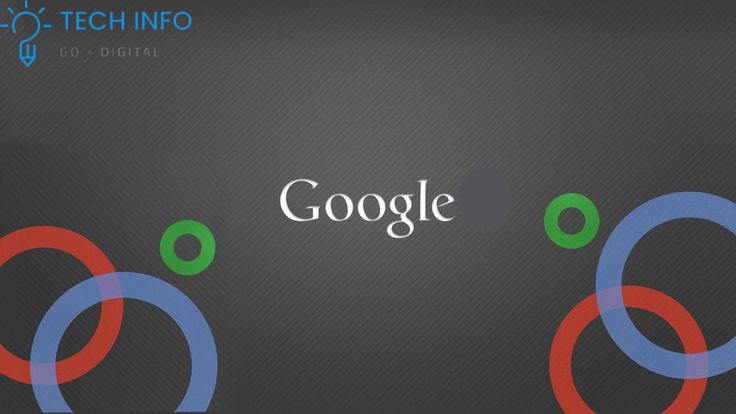
Google pushes AI into flight deals as antitrust scrutiny, competition heat up Introduction Google has once again pushed the boundaries of AI integration with its latest feature, Flight Deals, designed to revolutionize how travelers find and book flights. Launched in beta on August 14, 2025, this tool leverages natural language processing (NLP) to understand user queries like “affordable nonstop flights to Europe in December” or “best ski destinations with direct flights under $500.” While this innovation promises a smoother, more intuitive travel booking experience, it arrives at a time when Google faces mounting antitrust scrutiny in both the U.S. and EU. Regulators are increasingly concerned aboutdominance in search and digital advertising, with recent rulings and investigations threatening to reshape its business model. This article explores: How Google’s AI-Powered Flight Deals Works Google Flights has long been a go-to tool for travelers comparing airfares. The new Flight Deals feature takes this a step further by integrating generative AI to interpret flexible travel preferences and deliver personalized recommendations. Key Features: ✔ Natural Language Search – Users can type or speak requests like “cheapest weekend getaway from NYC in fall”✔ Dynamic Pricing Insights – AI predicts price trends and suggests the best booking windows✔ Personalized Recommendations – Considers past searches, preferred airlines, and budget constraints✔ Multi-City & Open-Jaw Support – Helps plan complex itineraries with ease Initially available in the U.S., Canada, and India, the tool is expected to expand globally if successful Why This Matters for Travelers However, while consumers may benefit, competitors and regulators are watching closely. Google’s Antitrust Battles: A Growing Threat expansion into AI-driven travel tools comes amid intensifying legal challenges that could limit its dominance. 1. EU’s Digital Markets Act (DMA) Crackdown The European Commission has accused Google of self-preferencing—favoring its own services (like Google Flights and Hotels) over competitors in search results. Under the DMA, Google could face fines of up to 10% of global revenue if found guilty Google’s proposed fix? But critics argue these measures may not go far enough. 2. U.S. Antitrust Rulings Looming In the U.S., Google faces two major legal threats: A. Search Monopoly Case (2024 Ruling) A federal judge ruled that Google illegally monopolized search and search advertising. Possible remedies (expected by late August 2025) include: B. AdTech Monopoly Case (2025 Ruling) A separate case found Google guilty of monopolizing digital advertising. The DOJ is considering: 3. Scrutiny Over AI Deals Google’s $2.7 billion partnership with Character.AI is under investigation for potential anti-competitive structuring Competition Heats Up: Perplexity AI, OpenAI, and More As regulators tighten the screws, Google’s rivals are seizing opportunities. 1. Perplexity AI’s Bold Moves 2. OpenAI’s Missed Partnership Court documents reveal Google rejected an OpenAI proposal in 2024 to integrate ChatGPT into its search—highlighting reluctance to open its ecosystem 3. Rising Travel Tech Competitors What’s Next for Google Flights & Antitrust Timeline Key Developments August 2025 U.S. court ruling on Google’s search monopoly remedies Q4 2025 Potential EU DMA enforcement actions 2026 Possible expansion of Flight Deals globally Ongoing DOJ’s decision on Google’s ad-tech breakup Possible Outcomes: ✅ If Google Wins: AI Flight Deals could dominate travel search❌ If Regulators Intervene: may be forced to: Innovation vs. Regulation Google’s Flight Deals showcases AI’s potential to transform travel search, but its success hinges on regulatory outcomes. As the antitrust battles unfold, one thing is clear: The future of search and AI-driven travel hangs in the balance.
Australian court finds Apple, Google abused app store market power
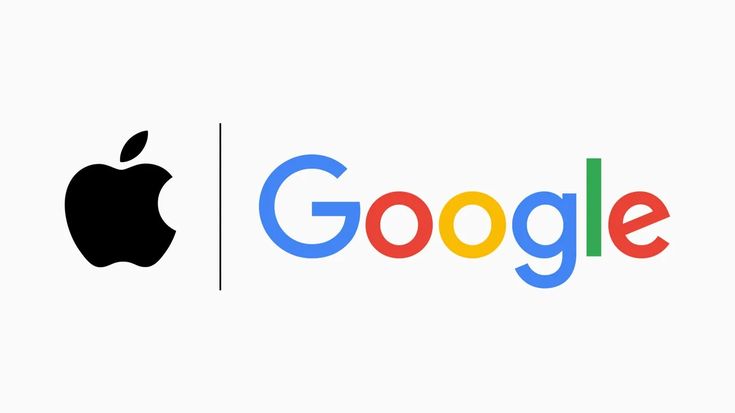
A Landmark Decision: Australia Holds Its Ground On August 12, 2025, Australia’s Federal Court delivered a partial yet groundbreaking ruling in favor of Epic Games—the developer of Fortnite—in its long-running legal battle with Apple and Google. The court found that the companies misused their market power, engaging in practices that substantially lessened competition in their app stores Specifically, Justice Jonathan Beach determined that both tech giants acted against Australia’s Competition and Consumer Act, particularly Section 46, which prohibits corporations with substantial market dominance from engaging in conduct that diminishes competition. Key Findings: What the Court Said 1. Anti-Competitive Practices Confirmed 2. No Intent Requirement The judgment did not hinge on intentional wrongdoing; it was sufficient that Apple and Google’s conduct had the effect of blocking competition—even if security or ecosystem integrity were cited as justifications 3. Some Claims Rejected Not all of Epic’s accusations stuck. The court dismissed claims of unconscionable conduct—i.e., behavior so unjust it offends good conscience 4. Massive Judgments; Partial Public Access The full written verdict spans over 2,000 pages, though only summaries were released initially. Impact & What Lies Ahead Epic’s Victory—and What It Means Epic Games hailed the court’s decision as a win for developers and consumers—opening the door to more flexible app distribution and payment methods. The developer plans to bring not only Fortnite but also its Epic Games Store to iOS in Australia Class Actions Take Center Stage Simultaneously, two class actions—on behalf of millions of consumers and around 150,000 app developers—were joined to the Epic lawsuit. Legal representatives suggest compensation could reach hundreds of millions of dollars, though precise amounts await a future hearing Broader Regulatory Significance The ruling marks a key application of Section 46 and has revived calls for digital competition reforms. Advocates like the Australian Communications Consumer Action Network (ACCAN) urge the government to enact ex-ante regulation of Big Tech to prevent abuses before they occur—not just address them retroactivel Industry Response Apple welcomed the rejection of some claims but firmly disputed the ruling’s other parts, arguing it “faces fierce competition” and that the App Store remains the “safest place” for users Google was relieved that requirements to host competitor app stores within Google Play were dismissed, but plans to review and possibly appeal aspects of the ruling related to billing practices. Why This Matters Aspect Significance Developer Autonomy Lowers barriers to alternative payment systems and app distribution—boosts profit margins and user control. Regulatory Precedent Sets a benchmark for future competition law applications—particularly given the lack of need to prove intent. Consumer Savings Reducing reliance on expensive in-platform fees may translate into cheaper apps and in-game purchases. Global Echo Effects Actions in Australia echo similar rulings in the U.S. and EU, shaping Big Tech behavior worldwide. Final Thoughts Australia’s ruling is a landmark moment in the tech antitrust world—affirming that dominant platforms must not just act lawfully in intent but also avoid trading in ways that dampen competition, regardless of motivations. Stakeholders—including regulators, developers, and industry watchers—will eagerly anticipate the full judgment and tomorrow’s remedies: whether they take the form of financial compensation, structural changes, or legislative reforms. Epic’s partial legal win in Australia may well become a catalyst for shifting the mobile app ecosystem toward openness and fairness—not only for Australians, but for the global digital landscape.
Sam Altman addresses ‘bumpy’ GPT-5 rollout, bringing 4o back, and the ‘chart crime’
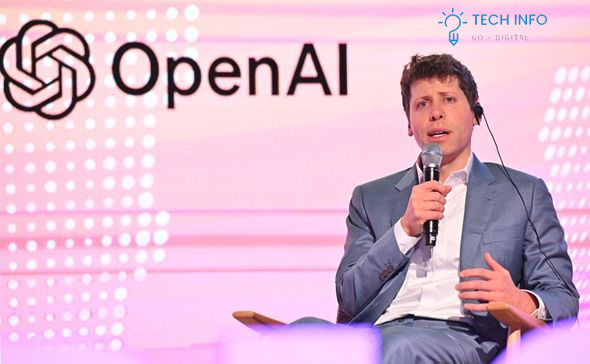
Sam Altman’s GPT-5 AMA: Bugs, Comebacks, and the Chart That Lied OpenAI’s GPT-5 launch was supposed to be a triumphant leap forward—but instead, it stumbled out of the gate. In a candid AMA, Sam Altman addressed the rocky rollout, fan backlash over GPT-4o’s disappearance, and even a now-infamous “chart crime” that set the internet ablaze. Here’s the breakdown of what went wrong—and what’s coming next. 1. The “Bumpy” GPT-5 Rollout The biggest issue? A faulty autoswitcher—the system that decides whether users get the lightweight, fast version of GPT-5 or the full, deep-thinking mode. When the router malfunctioned, responses felt… well, dumber than expected. Altman admitted the glitch made GPT-5 seem worse than it actually is and promised quick fixes, including: ✅ Smarter switching between model variants✅ Better visibility so users know which mode they’re in✅ A manual “thinking mode” button for those who want full power “We’ll get this smoothed out,” Altman assured users. 2. GPT-4o: The Fan Favorite May Return Reddit and X (formerly Twitter) lit up with complaints—some even joked it felt like “losing a pet.” Altman heard the outcry and hinted at a possible comeback: 🔹 OpenAI is exploring ways to bring GPT-4o back for Plus subscribers🔹 They’re weighing trade-offs but want to keep long-time fans happy🔹 As a consolation, ChatGPT Plus rate limits were doubled, giving users more room to test GPT-5 3. The Infamous “Chart Crime During the GPT-5 demo, eagle-eyed viewers spotted a glaring error: a bar chart where a lower percentage had a taller bar than higher numbers. Altman owned the mistake, calling it a “mega chart screwup” caused by last-minute prep fatigue. The chart was quietly fixed in the official blog post—but not before it became immortalized in memes. 4. Altman’s Closing Promise Despite the hiccups, Altman ended on an optimistic note: “We’ll keep working to get things stable—and keep listening to feedback.” For OpenAI, the GPT-5 saga is far from over. But if history is any indicator, they’ll likely bounce back stronger than ever. Final Thoughts This AMA was a rare peek behind the curtain at OpenAI’s growing pains. Bugs happen, memes spread, but the real test is how quickly they adapt. What do you think? Should GPT-4o make a full comeback? And did you spot the chart blunder? Let us know in the comments!
Meta acquires AI audio startup WaveForms
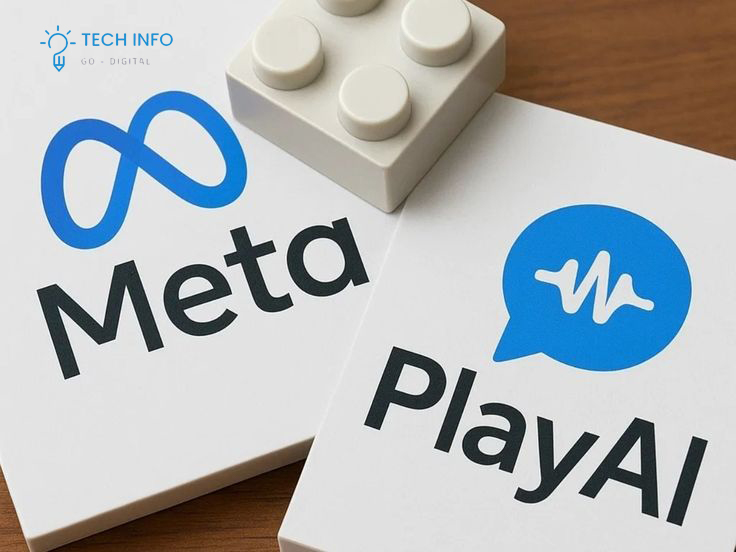
Meta Acquires AI Audio Startup WaveForms: A Strategic Leap in AI-Driven Sound Innovation In the fast-moving world of artificial intelligence, sound technology is emerging as a key frontier. While Meta is already known for its ambitious plans in the metaverse, virtual reality (VR), and augmented reality (AR), this acquisition signals an intensified focus on sound as a central element of digital interaction. The deal reflects Meta’s growing recognition that immersive audio experiences—from crystal-clear voice communication to lifelike spatial sound—are just as crucial as visuals in the digital environments it aims to build. Who Is WaveForms? The company has built a reputation for delivering studio-grade audio enhancements in real time, making it an attractive target for tech giants seeking to elevate the quality of online communication. Key Innovations of WaveForms: WaveForms’ combination of AI, acoustics, and user-centric design makes it a natural fit for Meta’s long-term vision. Why Did Meta Acquire WaveForms Meta’s decision is driven by both strategic necessity and technological opportunity. The company’s road map for the next decade depends heavily on delivering realistic and engaging virtual spaces, whether in gaming, business meetings, or social experiences. 1. Strengthening the Metaverse Experience The metaverse thrives on a sense of presence. Just as graphics deliver the visual realism, audio delivers emotional realism. WaveForms’ AI could allow Meta to create environments where sound feels as alive and responsive as the visuals—such as footsteps changing based on surface texture, or voices naturally shifting in volume and direction as avatars move. 2. Improving Communication Across Platforms Meta owns Messenger, WhatsApp, Instagram, and Facebook, each with voice and video features. Integrating WaveForms’ noise suppression and enhancement tools could instantly improve call quality for billions of users worldwide. 3. Advancing AI Research at FAIR Meta’s Facebook AI Research (FAIR) division is already exploring natural language processing, computer vision, and generative AI. Adding WaveForms’ expertise could open doors for hyper-realistic AI speech synthesis, instant voice translation, and smart audio filters. 4. Gaining a Competitive Edge Rivals like Google, Apple, and Microsoft are investing in AI-driven audio—Google with AI music generation, Apple with adaptive AirPods audio, and Microsoft with Teams’ intelligent noise suppression. Meta’s move ensures it won’t lag behind in this competitive domain. Potential Applications in Meta’s Ecosystem WaveForms’ technologies could be deployed across ’s entire product line: How This Fits Meta’s Long-Term Vision has made no secret of its aim to build a fully interconnected virtual economy and culture within the metaverse. But for users to feel truly present, sound must feel as authentic as a face-to-face conversation. WaveForms can help solve existing challenges such as: By embedding AI audio into its infrastructure, Meta can bridge these gaps—making its virtual spaces more comfortable, intuitive, and believable. Industry Reactions & Potential Challenges Industry analysts have generally welcomed the acquisition, noting that AI-driven audio is becoming a critical competitive factor. They highlight the potential for to: However, the move is not without challenges: Meta will need to demonstrate strong safeguards and transparent AI practices to address these concerns. Future Outlook The acquisition of WaveForms could lead to: If implemented correctly, these capabilities could redefine online communication—not just for Meta’s platforms, but as an industry benchmark. : A Clear Signal in Meta’s AI Ambitions s purchase of WaveForms is more than a routine startup acquisition—it’s a statement of intent. By investing in the future of AI-driven audio is preparing for a post-text, post-flat-screen era, where human-like voice interaction is a daily norm. In the coming years, users can expect: The message is clear: Meta wants to own the soundscape of the digital future. With WaveForms in its arsenal, it’s well on its way
AI agents aren’t the ‘new Google,’ says Airbnb CEO

AI Agents Aren’t the ‘New Google,’ Says Airbnb CEO — And He Might Be Right” The tech world is abuzz with the rise of AI agents — smart assistants that can plan vacations, buy groceries, schedule appointments, or even write code. Many are calling them the “new Google”, claiming that traditional search engines may become obsolete as AI agents take over our digital lives. But Brian Chesky, the CEO of Airbnb, isn’t buying into the hype — at least not yet. In a recent statement, Chesky shared his thoughts on the AI agent boom and why he believes these tools may not be the existential threat to search engines people assume. He offers a more grounded erspective — one that urges caution, focus, and user experience over buzzwords and speculation. Let’s unpack what he means — and why his take might be worth listening to. The AI Agent Hype: “Google Killer” or Overhyped Trend? Since the launch of ChatGPT, Gemini, Claude, and other advanced AI tools, the internet has seen a wave of predictions: “Search is dead,” “Google’s business is doomed,” or “AI agents will replace everything.” The narrative goes something like this: why Google something when you can ask an AI agent to do the work for you — book flights, summarize articles, compare products, or find local services? At first glance, this makes sense. AI agents can: But Chesky is skeptical — not because he doubts the power of AI, but because he knows how people interact with platforms and how product design shapes behavior Chesky’s View: Agents Can’t Replace Experience Speaking at recent industry events and interviews, Chesky made a simple point: AI agents are only as useful as their integration with real-world services. In his words, “They’re not a product by themselves. They are a feature.” What he means is this: In short, AI isn’t replacing platforms — it’s plugging into them. Why the “New Google” Analogy Fails There are several reasons Chesky (and many product leaders) believe AI agents aren’t yet the new Google: 1. Lack of Real-Time Data Access Agents often don’t have live access to up-to-the-minute listings, prices, or stock inventory unless they’re fully integrated with platforms. Google Search, on the other hand, indexes millions of websites continuously. 2. Trust and Accountability When you Google something, you can evaluate multiple sources. With an AI agent, you get a single answer. But who guarantees that answer is accurate, unbiased, or up-to-date? 3. Brand Relationships Matter Users trust platforms like Airbnb not just for data, but for customer service, user reviews, refund policies, and curation. AI agents can’t recreate that level of trust infrastructure — they can only interface with it. Airbnb’s AI Plans: Augmentation, Not Replacement Interestingly, Chesky isn’t anti-AI at all. In fact, Airbnb is investing heavily in AI — but not as a standalone “agent.” Instead, it’s being used to: Chesky envisions a future where Airbnb includes intelligent agents within the platform, but they act more like co-pilots than replacements. Think of it as a concierge who understands your style, preferences, and travel history — not just a robot who Googles stuff for you. This approach aligns with how people want to use AI: not to remove platforms, but to make them smarter, more responsive, and easier to use. The Real Challenge for AI Agents If AI agents want to become more than clever toys or chatbots, they face several big challenges: 🔸 1. Interface Limitations Talking to a bot can be helpful — but browsing, comparing, scrolling, and filtering visually still matter. Agents are limited when users want to explore options, not just receive answers. 🔸 2. Complex Decision-Making Real-world decisions — like choosing a vacation rental — involve complex, subjective trade-offs. AI agents can’t always understand nuance, emotion, or what “feels right.” 🔸 3. Platform Resistance Big platforms (Airbnb, Amazon, Booking.com) don’t want to give up control of the user experience to outside AI agents. Many will limit access to inventory and APIs to keep users on-platform. This creates a fragmented environment where AI agents can’t fulfill the promise of being “one app to rule them all.” What Does This Mean for the Future of Search? AI agents will change how we search, shop, plan, and learn. That much is true. But instead of destroying Google, they may co-exist with it — or even be integrated into it (as we already see with Google’s AI Overviews). Rather than replacing Airbnb, they’ll work within it to enhance the experience. The future isn’t “AI replaces everything.” It’s AI is embedded in everything — from travel apps to e-commerce to customer support. And that future is more useful, more human-centered, and more sustainable than one dominated by a single AI assistant. Final Thoughts: Why Chesky’s Perspective Matters In a tech industry prone to hype and bold predictions, Brian Chesky’s take is refreshingly grounded. He’s not dismissing the power of AI — he’s just reminding us that: “Technology needs to serve people. Not replace platforms people trust.” That philosophy is likely to win out. Users don’t care about how “smart” a system is if it doesn’t help them feel safe, confident, and happy in their experience. Airbnb CEO So, while the AI agent revolution may be real — it’s not the end of Google. And it’s certainly not the end of platforms like Airbnb. It’s a shift in how we interact with the digital world — and how that world learns to understand us better. Airbnb CEO In that evolution, thoughtful leaders like Chesky may guide the future just as much as the algorithms themselves.In a tech industry prone to hype and bold predictions, Brian Chesky’s take is refreshingly grounded. He’s not dismissing the power of AI — he’s just reminding us that: “Technology needs to serve people. Not replace platforms people trust.” That philosophy is likely to win out. Users don’t care about how “smart” a system is if it doesn’t help them feel safe, confident, and happy in their experience. So,
The Browser Company launches a $20 monthly subscription for its AI-powered browser
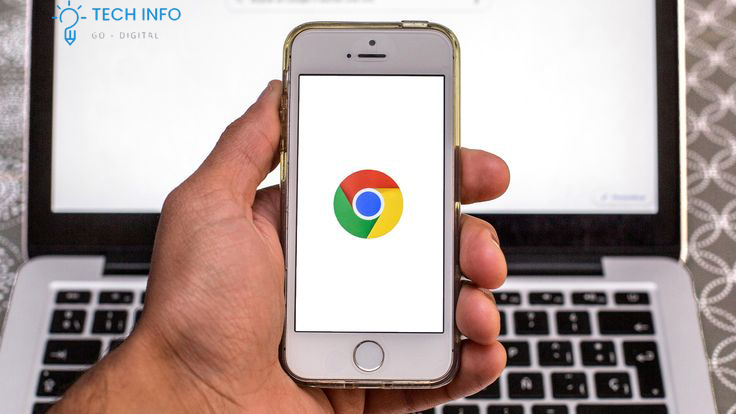
The Browser Company Introduces $20/Month Subscription for Its AI-Powered Browser: A Bold Leap into the Future of Web Browsing In a world where web browsers have long been viewed as free utilities—basic tools for accessing the internet—the idea of paying a monthly subscription for one may seem surprising, even controversial. But The Browser Company, the innovative startup behind the rising browser alternative Arc, is challenging that assumption head-on. In a bold and disruptive move, the company has announced a $20-per-month subscription plan for its new AI-powered browser experience. This development signals more than just a pricing change—it reveals a profound shift in how we define productivity, digital privacy, and the value of intelligent software. But what makes this browser worth paying for? And what does this mean for users, developers, and the future of the internet? Let’s break it down. From Free to Premium: Why Now? The web browser market has long been dominated by giants like Google Chrome, Safari, and Firefox—all of which are free to use. Their business models are generally ad-driven (like Chrome) or supported by larger ecosystems (like Safari’s integration with Apple products). So why is The Browser Company asking users to pay $20 a month? The answer lies in its AI-first philosophy. Unlike traditional browsers that merely open web pages, Arc (and its newer AI-enhanced version) is designed to augment human productivity, enhance creativity, and automate repetitive digital tasks. It’s not just a portal to the internet—it’s an intelligent partner in your daily workflow. By charging a subscription fee, the company positions its product not as just a browser, but as a premium productivity and automation tool—like Notion, Grammarly, or ChatGPT Pro. What Does the AI Browser Actually Do? At the core of this pricing model is a radically reimagined browser experience. Instead of simply rendering websites, the AI-powered Arc browser acts as a co-pilot for your digital life. Here are some of the key features: ✅ Smart Search with Context Arc’s AI understands the context of your tabs, notes, calendar, and browsing history, offering smart search results not just from the web, but from your own digital workspace. Looking for that document you opened last week while researching? Just ask. ✅ Auto-Organization of Tabs No more cluttered windows with 36 open tabs. Arc’s AI can categorize, group, and even archive tabs based on your behavior, usage frequency, or project relevance. ✅ Writing and Summarization Tools Whether you’re drafting an email, a blog post, or reviewing long research documents, the AI can summarize, suggest rewrites, or even generate content right within the browser. ✅ Meeting & Email Integration AI assistants can review your calendar, prep notes before meetings, or summarize emails—turning your browser into a virtual assistant dashboard. ✅ AI Workflows and Automations The browser integrates with apps like Notion, Figma, Slack, Google Docs, etc., and allows you to build custom automation workflows. Think of it as Zapier or IFTTT—but built into your browser, controlled by natural language. This is not a browser for casual web surfing. It’s a power tool for professionals—designers, writers, researchers, developers, and executives—anyone whose day is spent juggling digital inputs and outputs. Why $20? Is It Worth It? Let’s be honest: $20 per month for a browser is not for everyone. For many users, Chrome or Safari is more than enough. But for digital professionals and knowledge workers, $20 a month is a small price for hours saved, friction removed, and creativity enhanced. Here’s a simple analogy: people pay $10/month for Spotify to get music without ads. Professionals pay $30–$50/month for productivity suites like Microsoft 365 or Adobe Creative Cloud. So if a browser can become your workspace, your assistant, and your creative partner, the price starts to make sense. It’s not just about web browsing anymore—it’s about transforming how you work with the internet. Privacy and Trust: A New Business Model Another important aspect of this move is privacy. The Browser Company has made it clear that it will not monetize user data, unlike ad-driven browsers. The subscription model allows them to focus on user-centric design and privacy-first innovation. With growing global concerns around data misuse, surveillance capitalism, and AI ethics, this stance will likely resonate with privacy-conscious users. Instead of being the product, you are now the customer—and that changes everything. The Bigger Picture: Reinventing the Web Experience This subscription model is not just a pricing decision; it’s a signal. The Browser Company is betting on a future where AI is embedded at the interface level, not just in search engines or separate apps. Here are a few broader implications: 🌐 1. The Browser Becomes a Platform Just as iOS became more than a phone OS, Arc is positioning the browser as a platform for digital productivity, app integration, and custom AI assistants. 🤖 2. AI at the Center of Workflows Instead of switching between ChatGPT, your tabs, your email, and your calendar, everything becomes AI-powered and centralized—no more app-hopping. 💼 3. A New Market: The Premium Browser Segment Just like we now have premium note-taking apps (Notion Pro), premium writing tools (Grammarly), and premium AI assistants (ChatGPT Plus), we’re entering an era of premium browsers. This move will likely inspire competitors, startups, and even big tech to explore similar directions. Potential Risks and Challenges Of course, this model is not without risks. ⚠️ Adoption Barrier Convincing users to pay for something they’ve always had for free is a major challenge. The Browser Company will need powerful onboarding, strong demos, and trial models to show the value. ⚠️ Feature Overload Packing a with too many features can overwhelm users. The company must balance power with simplicity. ⚠️ Competitive Response If major browsers like Chrome or Edge start integrating similar AI features for free, it could pressure Arc to justify its premium tag continuously : The Future is Here, and It Has a Price Tag The Browser Company’s launch of a $20/month subscription for its AI browser is a bold and visionary step. It’s not just about monetizing
Upwork is buying its way into corporate staffing beyond freelancers
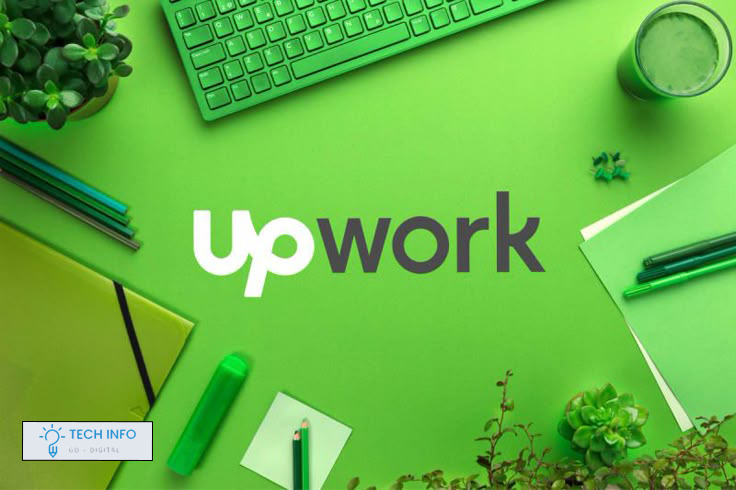
Upwork’s Corporate Shift: Moving Beyond Freelancers into Enterprise Staffing In the evolving world of work, digital platforms have transformed how talent connects with opportunities. Among these platforms, Upwork stands tall as a pioneer and leader in the freelancing industry. Traditionally seen as a marketplace for independent professionals and small businesses, Upwork is now venturing into corporate staffing—a move that signals not just expansion, but transformation. This strategic shift represents a broader trend in the gig economy: freelancing is no longer just about individuals picking up side gigs—it’s about large-scale, flexible workforce solutions. Upwork is not merely adapting to change; it is trying to define the future of staffing. But how is Upwork making this leap, and what does it mean for freelancers, clients, and the workforce at large? From Freelancing Platform to Workforce Solution Provider Upwork’s journey began with a simple idea: connect businesses with independent talent worldwide. Over the years, it grew by supporting freelancers in IT, writing, marketing, customer service, and more. But as demand for agile talent increased post-pandemic, Upwork began exploring new frontiers. Now, the company is aggressively targeting the enterprise and midmarket segment. It wants to go beyond individual contracts and become a comprehensive staffing partner for large corporations. The platform is no longer just a connector of gigs; it’s becoming an outsourcing partner, workforce manager, and staffing solution provider—often in direct competition with traditional staffing agencies. Strategic Acquisitions and Partnerships A key part of this transformation is buying its way into the corporate world. While Upwork has not made splashy billion-dollar acquisitions like some tech giants, it has strategically invested in technology, services, and enterprise solutions that allow it to appeal to larger clients. Upwork’s Enterprise Suite is tailored for businesses that need large teams, project management capabilities, compliance control, and centralized billing. It mimics traditional staffing services but with the flexibility and cost-efficiency of freelance work. Through targeted partnerships with project managers, HR tech platforms, and compliance tools, Upwork is quietly building an infrastructure that resembles that of a staffing firm—with a digital core. The company is also growing its Talent Scout and Project Catalog features to streamline hiring processes, ensuring that businesses can scale projects with confidence, speed, and security. These offerings are now bundled with account management, reporting tools, and talent curation—services that enterprise clients expect from professional staffing vendors. Why This Shift Now? Several macroeconomic and workforce trends explain why Upwork is making this move: 1. Changing Workforce Dynamics Companies are moving toward hybrid and remote models, requiring talent that is not bound by geography. With freelancing already normalized during the pandemic, businesses are now comfortable sourcing entire teams online. 2. Cost Efficiency and Flexibility Unlike permanent staffing, freelance solutions offer on-demand talent, reduce overhead, and lower long-term HR costs. This is attractive in uncertain economies where agility is a business necessity. 3. Talent Scarcity Traditional hiring methods often fail to meet urgent or highly specialized staffing needs. Upwork provides access to global talent pools, making it easier for businesses to find the right skills faster. 4. Digital Transformation Companies are adopting digital tools to manage workforce operations. Upwork fits into this digital-first strategy by offering a fully online, scalable, and compliant hiring platform. The Blurring Lines Between Freelancing and Staffing Upwork’s shift raises an important question: Is it still a freelancing platform, or is it turning into a digital staffing firm? The answer is somewhere in between. Upwork still champions freelancer independence, but with its increasing role in enterprise workforce orchestration, it resembles a tech-enabled staffing agency. It’s not simply matching talent with tasks—it’s curating teams, managing workflows, ensuring legal compliance, and even tracking performance. That’s far more than freelancing—it’s workforce management. What sets Upwork apart, however, is its platform-based approach. Unlike traditional staffing firms that rely on human recruiters, Upwork uses AI-powered algorithms, data analytics, and self-service dashboards to facilitate hiring at scale. It’s bringing technology to staffing, making it faster, cheaper, and more flexible. Implications for Freelancers For freelancers, Upwork’s pivot offers both opportunities and challenges. ✅ Opportunities: ❌ Challenges: Impact on Traditional Staffing Agencies Upwork’s rise in the enterprise space is a disruptive threat to traditional staffing firms. These firms, which have long dominated corporate hiring, now face a digital rival that offers: Unless staffing firms adapt and digitize, platforms like may eat into their market share, particularly in tech, marketing, and creative roles. Already, some agencies have started partnering with freelancing platforms rather than competing head-on. The Road Ahead: Platformization of Staffing What Upwork is doing is more than diversification—it’s platformizing the staffing industry. Just as Uber changed transport and Airbnb disrupted hospitality, Upwork is trying to redefine hiring and workforce deployment. In the near future, we can expect: This is not just evolution—it’s a reimagination of work. Conclusion Upwork’s move beyond freelancing into enterprise staffing is a bold step toward the future of work. By combining freelancer freedom with corporate structure, it is offering a hybrid model that may very well become the standard. For businesses, it means greater agility. For freelancers, it opens new doors. And for the staffing industry, it signals disruption. As work continues to move online and organizations become borderless, platforms like are positioning themselves not just as service providers—but as the architects of the new work order.
Google denies AI search features are killing website traffic
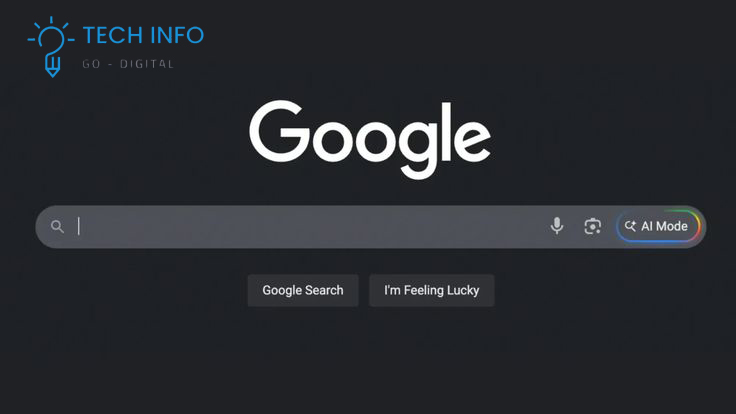
🧠 Google Denies AI Search Features Are Killing Website Traffic: The Full Story With the rapid evolution of artificial intelligence, particularly in how it’s integrated into search engines, a heated debate has emerged: Are AI search features killing website traffic? While many publishers and SEO professionals claim they are experiencing massive declines in organic traffic, Google has publicly denied these claims. According to the tech giant, its AI-powered Search features are not destroying the open web—but rather improving user experience and even helping some websites gain higher-quality visits.Google denies AI search features So, who’s right? Let’s explore the controversy, the facts, and what this means for online content creators. 🚀 What Are AI Search Features? Google’s AI features, especially AI Overviews, are designed to summarize search results directly on the search engine results page (SERP). This means instead of scrolling through blue links, users can get instant answers based on a blend of reliable sources. For example, if a user searches “how to lose weight fast,” the AI might generate a concise, bullet-pointed summary based on top-ranking content—without requiring the user to click any link.Google denies AI search features This approach saves time for users, but for website owners, it poses a risk: if users get their answers from Google directly, why visit the original site? 🧩 What Google Is Saying In an official blog post published in August 2025, Google strongly denied that AI Overviews are harming websites. Key takeaways from their defense include: Essentially, Google’s argument is: AI isn’t killing traffic—it’s changing it. 📉 The Other Side: What Publishers Are Experiencing While Google paints an optimistic picture, many website owners and industry experts are seeing something different: 1. Declining Click-Through Rates (CTR) Since AI Overviews display summarized content directly, users are less likely to click on the source link. As a result: 2. Smaller Publishers Are Hit Hardest Independent websites and niche bloggers, who rely heavily on organic search traffic, are reporting sudden drops in page views and revenue. 3. Legal and Antitrust Concerns Some companies, such as Chegg, have even filed legal complaints, alleging that Google’s AI is repurposing their content without proper attribution or traffic redirection. 🤖 AI and Zero-Click Search: The Real Threat? “Zero-click search” isn’t new. Even before AI, Google had featured snippets, instant answers, and “People Also Ask” sections. But with AI, these zero-click interactions have become more advanced and more frequent. In a traditional search model: User → Query → Clicks a link → Visits website In the AI model: User → Query → Gets AI answer → No need to click While users benefit from faster answers, the original content creators often lose out. Imagine investing time, money, and creativity into a high-quality blog post—only for AI to summarize it in one line with no user engagement. 📊 Data Doesn’t Lie: Conflicting Numbers Here’s what different sources are saying: Source Claim Google (2025) Search traffic stable; some content types gaining Search Engine Journal CTR for top organic links declining due to AI summaries Reddit/SEO forums Many publishers report traffic losses of up to 50% NYPost / WSJ AI Overviews disrupting ad revenues, legal complaints filed SEO Analytics Tools Spike in zero-click queries post-AI rollout So while Google insists the sky isn’t falling, much of the independent data suggests clear, negative impacts for many websites. 🌐 The Bigger Picture: Is the Web at Risk? The open web thrives on discoverability, traffic, and monetization. If AI continues to summarize and answer questions without proper redirection or attribution, it could discourage: This isn’t just about traffic—it’s about incentive. Why create content if it won’t bring visibility or income? 🛡️ How Publishers Can Adapt Even if AI is reshaping how users interact with search, there are strategies to stay visible: 1. Focus on E-E-A-T Google values content with Expertise, Experience, Authoritativeness, and Trustworthiness. Invest in creating content that showcases your unique human voice. 2. Use Structured Data Implementing schema markup (e.g., FAQs, How-to, Reviews) helps search engines understand and properly display your content. 3. Create Multimedia Content Videos, podcasts, infographics, and interactive tools are less likely to be replaced by AI summaries. 4. Build Direct Channels Relying only on search traffic is risky. Grow your email list, social media presence, and direct traffic to your site. 5. Explore AI Licensing Some AI companies are starting to license content from creators. Stay informed about potential partnerships or monetization opportunities. 🧭 Final Thoughts: Who’s Right? Is Google being honest? Or are they downplaying the damage? The answer may lie somewhere in the middle. ✅ Google may be correct that some websites are thriving in the AI era.❌ But it’s also clear that many others are struggling, especially if their content is purely informational and easily summarized. The future of content and traffic will depend on how fairly and transparently AI systems credit and support creators. If done responsibly, AI can enhance the web. But if not, it may undermine the ecosystem that gave it the knowledge to begin with.Google denies AI search features Conclusion Google’s denial of AI search features harming web traffic has sparked serious discussion in the tech and publishing worlds. While the company maintains that AI is helping users and not hurting content creators, independent data and user reports tell a more complicated story.Google denies AI search features The digital landscape is evolving fast. As a content creator, staying informed, adaptable, and diverse in traffic sources is more critical than ever.

